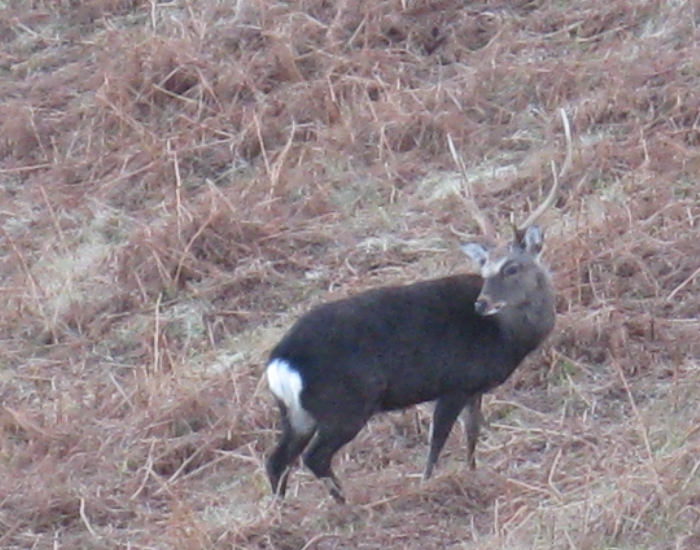Scientific name: Cervus nippon
Family: Cervidae
Appearance: The Sika Deer was introduced to Britain from Japan in the 19th century for deer parks and collections but escapes and deliberate releases have resulted in naturalised populations establishing themselves in several locations around the UK and Ireland. Closely related to the Red Deer they are similar in appearance but more slender and slightly built. Hybridisation with Red Deer has taken place and many, if not most, animals are probably hybrids. When in their summer coat, which is dappled with white spots, Sika Deer may appear more like fallow deer. The distinguishing features of the Sika Deer are a white gland on the lower back leg and the white rump patch which is encircled in black (no black in Red Deer). Antlers are carried by males only and while similar in structure to Red Deer antlers are smaller with a maximum of four points. [Deer are our most-often confused species! If in doubt, please check out our Deer ID guide.]
Size: Head and body 1.2-1.9 m (males), 1.1-1.6 m (females); Height at shoulder 1.07-1.22 m; Tail 10-15 cm; Weight 40-55 kg (males), 28-40 kg (females)
Natural history: Sika Deer are active throughout the year and the day with activity peaking at dawn and dusk. Largely solitary outside the breeding season although females sometimes form loose groups. They browse and graze mainly on grasses and heather, shoots and leaves of coniferous and deciduous trees, holly, gorse and bark. The rut takes place during October and November and stags have been recorded displaying a variety of mating strategies such as harems, rutting territories and general wandering in search of opportunistic mating opportunities. Females give birth to a single calf in May or June which suckles for about six months but is also taking solid food after about 10 days.

(C) Michael Day (shared under a CC BY-NC 2.0 license)

 English (United Kingdom)
English (United Kingdom)  Czech (Čeština)
Czech (Čeština)  Nederlands (nl-NL)
Nederlands (nl-NL)  Magyar
Magyar  Deutsch (Deutschland)
Deutsch (Deutschland)  Croatian (Hrvatski)
Croatian (Hrvatski)  Polski (PL)
Polski (PL)  Español (España)
Español (España)